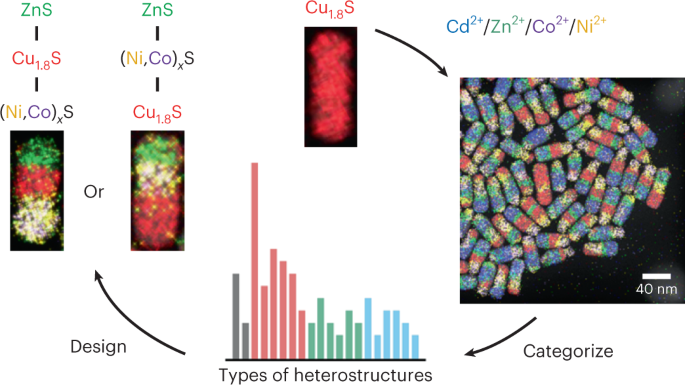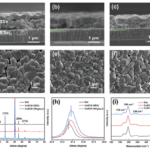2023-01-13 ペンシルベニア州立大学(PennState)
化学者は通常、単一の生成物を目標とする最適な条件を見つけ、作るために工学的に設計されてきた。ペンシルベニア州立大学の研究チームは、この方法を逆手にとり、最適化されていない条件をあえて用いて、一度に多くの製品を製造することに成功した。この手法により、さまざまな材料をさまざまな配列で組み合わせた新しいナノ粒子を発見することができた。そして、これらのナノ粒子を分析し、最も興味深いタイプの新しいナノ粒子のサンプルを大量に作ることができる新しいガイドラインを開発した。
研究者たちは、まず、硫化銅という単一の材料からなる比較的単純な棒状のナノ粒子から始めます。この材料は、銅の荷電原子(「カチオン」)を含んでいます。そして、「陽イオン交換」と呼ばれるプロセスを用いて、粒子内の銅の一部または全部を他の金属に置き換えることができる。粒子内の金属の配置や、粒子間の界面が、粒子の特性を決定する。今回の実験では、特定の金属カチオンの交換に最適化されていない条件下で、4種類の金属カチオンを同時に添加した。そして、電子顕微鏡とX線回折を用いて、得られた粒子の特性を丹念に調べた。
その後、研究チームは、反応の温度や金属陽イオンの相対量と種類を変えるなど、わずかに変化させた変数を用いて実験を行いました。そうすることで、さらに複雑なナノ粒子が生成され、最終的には、新しいタイプのナノ粒子がどのように形成されたかを説明する新しいルールを解明することができたのである。
そして最後に、研究チームは新製品の1つを選び、その新しい設計指針を用いて効率的に大量生産することに成功した。
これらの実験を説明した論文は、1月9日付けのNature Synthesis誌に掲載されています。
<関連情報>
- https://www.psu.edu/news/eberly-college-science/story/unconventional-experiments-produce-new-nanoscale-particles-big/
- https://www.nature.com/articles/s44160-022-00203-4
コンビナトリアルカチオン交換によるヘテロ構造ナノロッドの探索と合理的合成 Combinatorial cation exchange for the discovery and rational synthesis of heterostructured nanorods
Connor R. McCormick,Rowan R. Katzbaer,Benjamin C. Steimle & Raymond E. Schaak
Nature Synthesis Published:09 January 2023
DOI:https://doi.org/10.1038/s44160-022-00203-4

Abstract
Precisely engineering heterostructured nanoparticles that incorporate different materials in specific configurations requires appropriate design guidelines and synthetic tools. Cation exchange reactions offer a capable pathway for rationally transforming simple nanoparticles into a large library of complex heterostructured products, but existing capabilities remain limited, leaving many compositions and architectures out of reach. Here, we establish a combinatorial solution chemistry platform to accelerate the discovery and rational synthesis of heterostructured nanoparticles. By introducing copper sulfide nanorods into mixtures of cations (Cd2+, Zn2+, Co2+, Ni2+, In3+, Ga3+) under purposely unoptimized conditions, many heterostructured metal sulfide products form simultaneously, maximizing product diversity. By modulating simple reaction variables, such as temperature, concentration, stoichiometry, choice of cations and morphology, we observe hundreds of products that are incompatible with existing design guidelines. We then translate these observations into scalable reactions to rationally produce high-yield samples with previously inaccessible features.



